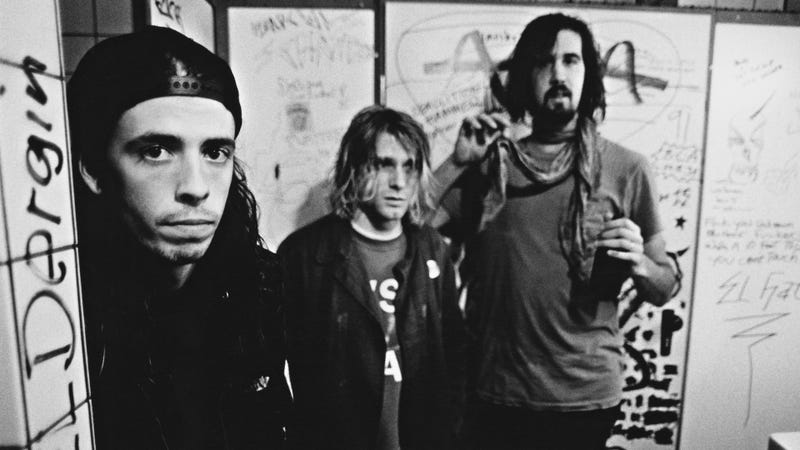
In the canon of Rock, there’s a handful of albums that are THE album. Dark Side of the Moon, Back In Black, Appetite For Destruction, Led Zeppelin IV, Master of Puppets, Sgt. Pepper’s Lonely Hearts Club Band. You know, THE albums that changed Rock.
There’s been hundreds of thousands of words dedicated to those records. After all, what else is there left to say? They’re masterpieces. There’s one album belonging to that group that had a profoundly different impact than many of the aforementioned albums. We’re talking about an album that changed the tide of music and influenced a whole generation of fans and media.
You know the album, the one that opens with the repeating “hello, hello, hello, how low” in the lead up to the chorus. That album is Nirvana’s Nevermind. 30 years later, it continues to profoundly impact music and media.
Listen to your favorite music now on Audacy and celebrate 30 years of Nevermind on Nirvana Radio
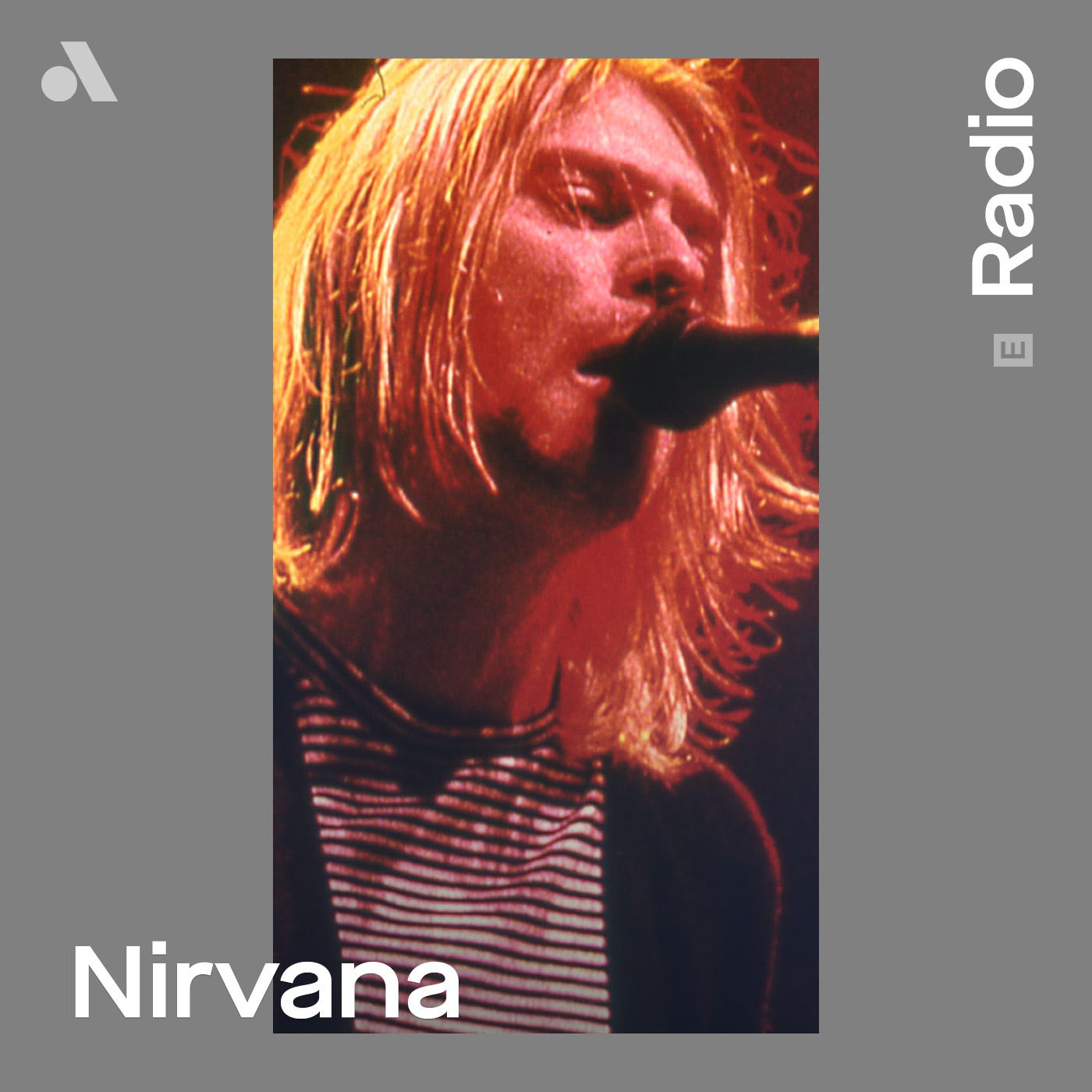
Part of the allure of the record is the time period in which it was released. The roots of Grunge and Alternative Rock were already laid well before Nirvana began planning Nevermind in 1990. Veteran Rock acts mixed in with Hard Rock and Hair Metal outfits characterized much of the mainstream in the years prior.
Unbeknownst to everyone at the time. There was a major cultural shift brewing and all it needed to get this seismic shift underway was a record like Nevermind.
In honor of the 30th anniversary of one of The Great Rock Albums Of All Time, we wanted to take a different approach. Like we said above, how do you write about a masterpiece record that’s been written about thousands of times already?
Instead, we spoke with the brightest minds here at Audacy to get a first-hand look at how Nevermind changed radio. Hear from those who had a front row seat to see Nirvana take over the world and get their thoughts on not only the album’s legacy, but the impact it had on radio.
Without further ado, as one talented songwriter named Kurt Cobain so eloquently put it, “here we are now, entertain us.”
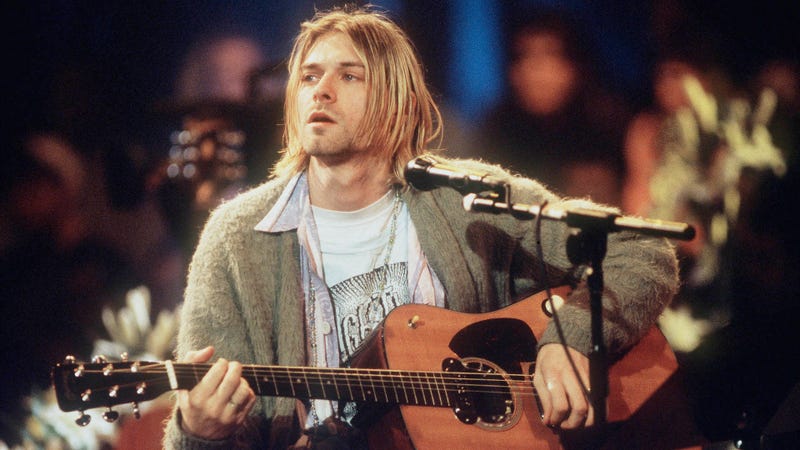
Part I: The Landscape
Alternative music began its march towards commercial viability in the late 80’s as outlets like Billboard began to gather and track data on the most-played songs on American Modern Rock radio. The Alternative Airplay chart made its debut on September 10, 1988 serving as a tangible mechanism for gauging the popularity of the music that didn’t quite fit on traditional Rock radio.
In the years preceding the release of Nevermind, artists like R.E.M., U2, The Cure, XTC, The Replacements, Depeche Mode, Jane’s Addiction, and other artists that are considered Alternative mainstays all had number one singles on the chart.
While it wasn’t a totally barren landscape, Alternative radio as we know it today had barely begun to take hold by the time Nevermind was in production. “Alternative stations of my acquaintance were playing cool angular rock from Athens, Georgia. Iconic area rock from Dublin. Blues-based guitar heroes from Austin. But no one anywhere was playing anything that sounded like Nirvana,” Audacy’s Lin Brehmer of WXRT Chicago said.
Remy Maxwell of JACK FM in Minneapolis and KGON in Portland added, “I don't really think there WAS Alternative radio, outside of what KROQ was doing.”
In an album review for Entertainment Weekly, David Browne wrote, “The problem with current college-radio rock is that most so-called alternative bands desperately want to sound normal.”
Around the time Nevermind was released, college radio and commercial radio was heavily intertwined in the eyes of the Alternative Airplay chart. At the chart’s inception, 18 commercial stations and 11 non-commercial stations submitted reports of their airplay history to Billboard. The format was in its infancy and was certainly nowhere near as vast as it is today.
Plenty of fantastic music was being heard on the radio, but you had to know where to look. When asked to describe what Alternative radio was like prior to Nevermind’s release, there was a common theme amongst our respondents, “not much.”
The music of the underground was simmering and beginning to bubble up to the surface. Still, it needed that one BIG album or song to break through to the mainstream.
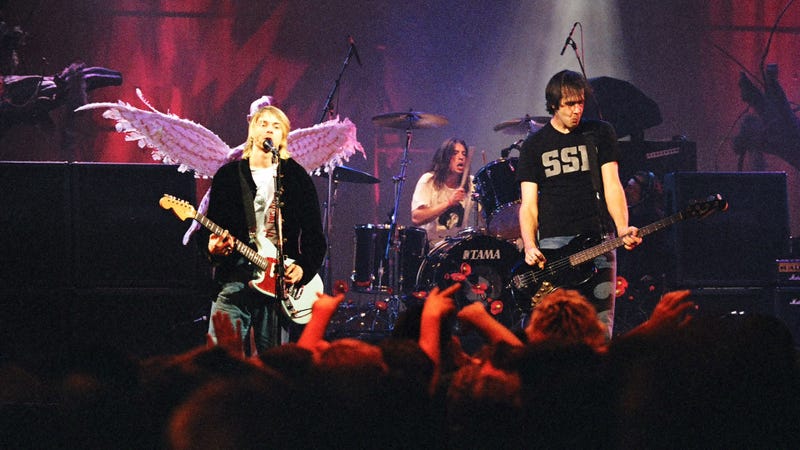
Part 2: The Lead Up
Nirvana scored their first number one single on the Alternative Airplay chart when “Smells Like Teen Spirit” hit the top spot on November 23, 1991. Funny enough, for a song as monumental as “Smells Like Teen Spirit” (which is something we’ll touch on later), it only peaked at the number six position on the Billboard Hot 100 chart.
“Smells Like Teen Spirit” wasn’t the first song from the Alternative Airplay chart that would experience crossover success. Since this piece is radiocentric, it’s important to understand what the term “crossover” means.
In its plainest terms, a crossover is a musical work, usually a song or an album, that appeals to different audiences. In radio, a crossover commonly refers to a song that appears on two or more different musical formats (I.E. Alternative Radio and Top 40 Radio). On the charts, it can be a song that appears on two separate charts at the same time (I.E. the Alternative Airplay Chart and the Hot 100 Chart).
Before “Smells Like Teen Spirit” was released, there were several number one singles from the Alternative Airplay chart that experienced crossover success.
Sinead O’Connor’s version of “Nothing Compares 2 U” went number one on the Hot 100 chart. “Losing My Religion” from R.E.M. hit the top spot on the Mainstream Rock chart and peaked at number four on the Hot 100. Depeche Mode’s “Policy of Truth” peaked at number 15 on the Hot 100 and at number two on the Dance Club Songs chart.
Crossover from the Alternative world into the mainstream wasn’t impossible, it just wasn’t very common yet.
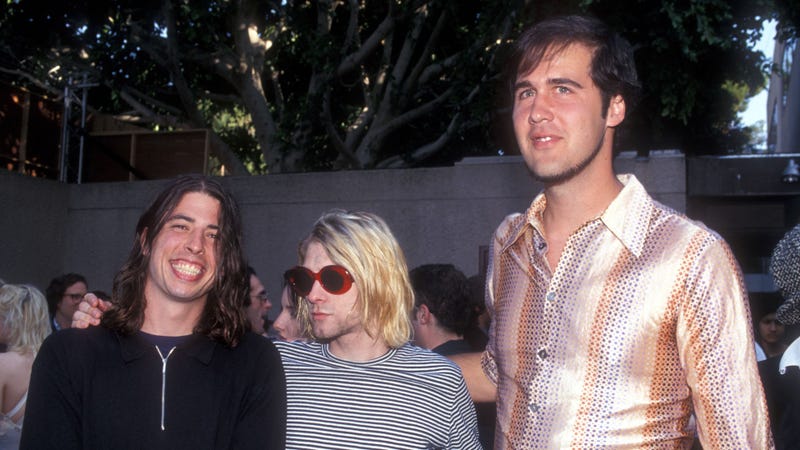
Part 3: The Release
Nevermind was released to the world on September 24, 1991 with modest fanfare having debuted on the Billboard 200 albums chart at number 144. Geffen Records, the label that Nirvana was signed to, would have considered the album a success if it sold 250,000 copies.
It wasn’t a hit-the-ground-running occurrence where the album shot to the top spot immediately following its release, but it also didn’t take long for the record to become a global phenomenon.
On January 11, 1992, Nevermind had taken the top spot on the Billboard charts and was averaging 300,000 in album sales a week. Global phenomenon may not even scratch the surface of appropriately describing its impact.
Our team of respondents at Audacy had mixed reactions when asked what their first impression of the album was. Ally Johnson of KROQ in Los Angeles said, “I liked it, but didn't understand it's significance until later in life.”
Other respondents did not have a favorable first impression of Nevermind with a few saying they didn’t care for it and a few saying they hated it at first. Remy Maxwell shared a memorable story about his first time hearing the record. “My roommate in Hollywood was an assistant engineer on the album at Sound City and he brought home a rough mix of ‘Smells Like Teen Spirit,’” Maxwell said. “He said, ‘THIS is gonna be the biggest thing EVER.’ I said ‘NO WAY is that gonna happen...’”
Maxwell then added, “Famous last words, eh?”
Another memorable story comes courtesy of Lin Brehmer, who described the time he saw Nirvana at the suggestion of a friend that worked at Geffen who insisted they were about to blow up. “Halfway thru the show, he asked me, ‘well, what do you think?’ I remember my response vividly,” Brehmer says. “‘I love bands with big guitars. This music is right up my alley, but commercial radio will never play this. In ten years no one will remember their name.’"
“I was wrrrr....wrrrr....wrrrong.”
On the flipside, we had several respondents who were fans from the very first note and believers that something special was at hand.
“It felt like someone had pulled the cork on an explosive bottle and clearly couldn't put it back in to stop the explosion,” said Gregr of Audacy’s KNDD, KNRK, and KKDO. “I truly felt ‘it's about time,” said Kat Vance of Audacy’s WKBU in New Orleans. “It's like I was always waiting for it.”
“This is DIFFERENT,” Mark Hendrix of Audacy Greenville said, describing the record as “a changing of the musical guard. Good-bye hair bands.” Ryan Castle of KGON in Portland and KISW in Seattle put it bluntly, “[my] mind was blown.”
Even critics noted how different Nevermind sounded in comparison to other Alternative acts in their initial reviews of the record. “If Nirvana isn’t onto anything altogether new, Nevermind does possess the songs, character and confident spirit to be much more than a reformulation of college radio’s high-octane hits,” Rolling Stone wrote in their initial review of the album.
The New York Times wrote, “[Nirvana] doesn't care about typical rock formulas or conventions. Nevermind is above easy categorization. Its accelerated rhythms and three-chord power riffs come from punk rock, but the dense, slamming guitars are as heavy as metal; Mr. Cobain has a menacing growl that could compete with the most ferocious metal dudes, but when the songs lighten up he shows a voice that is just as well suited to melodic pop.”
And we’ll provide the full quote we used earlier in the Entertainment Weekly review, “The problem with current college-radio rock is that most so-called alternative bands desperately want to sound normal. On their collar-grabbing second album, Nevermind, and their first for a major label, the Seattle trio Nirvana never entertain that notion.”
Since hindsight is always 20/20, the outlet closed their review with this gem. “Nirvana may not stand a chance of selling anywhere near as many records as Guns N’ Roses, but don’t tell Cobain; you never know how he’ll react.”

Part 4: The Aftermath
“What Nirvana did for rock music and American rock radio, is what punk rock did for England.”
That quote comes from Pearl Jam’s Stone Gossard in an interview he did with NBC News as he reflected on the impact of Nevermind. It’s an apt comparison and one that holds up 30 years after the album was released.
As Nevermind began to surge in popularity, the wheels of the cultural change that was at play were already spinning. Nirvana had taken over and radio could not get enough of it. In the immediate aftermath of its release, Nevermind “made radio more rebellious and adventurous, like it gave radio permission to have more edge,” says Ally Johnson.
“It killed ‘big hair’ Rock and brought on grunge as the ‘new thing’ in Rock, Bob Edwards of Audacy Kansas City added. Remy Maxwell noted that Nirvana’s success “bred a million wanna-be copycat bands that FLOODED the radio.”
That was just in the first few years after Nevermind was released. Nevermind showed that Alternative music wasn’t reserved for a tough to find radio frequency. It was heard anywhere you looked for it.
Could Nevermind have the same effect were it not released in 1991? The album’s producer, Butch Vig, doesn’t think so. “I think it would be tough to repeat that zeitgeist moment,” Vig told NME in an interview. “If Nevermind came out this week, despite being a great record, it would not have the same cultural impact. It was perfect timing coming out when there was a shift in music and it felt like a revolution. I can see that happening again, but not in the same way.”
We asked our respondents what effect the album has had on radio 30 years since its release and several commented how the songs continue to play a vital part of the playlist on multiple formats. From Alternative, to Rock, and now Classic Rock, songs from Nevermind are a staple of those formats.
“There is no alternative artist that hasn't used this album as an influence or at least highly respected its impact on music. which in turn changes alternative music forever,” Ryan Castle said. “Nevermind was an album that suggested if the music doesn't fit the format, change the format,” Lin Brehmer added.
Mahoney from ALT 94.9 in San Diego and ALT 107.5 in Las Vegas says Nevermind “created a generation of radio fans whose life was built around music.”
Nirvana’s legacy and impact on radio is still being felt to this day and will continue to do so well into the future. At the beginning of 2020, Nielsen published their decade end report and found that from 2010-2019, Nirvana was the most played artist on Mainstream Rock Radio.
To say Nevermind fundamentally changed radio may be overselling it a bit, but after speaking with the bright minds here at Audacy one thing is certain. It’s an album that continues and will continue to play a major part in the music you hear on the radio.
LISTEN on the Audacy App
Sign Up and Follow Audacy
Facebook | Twitter | Instagram